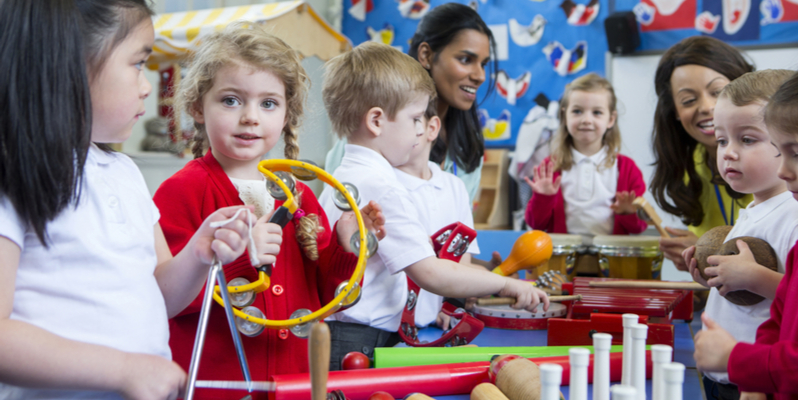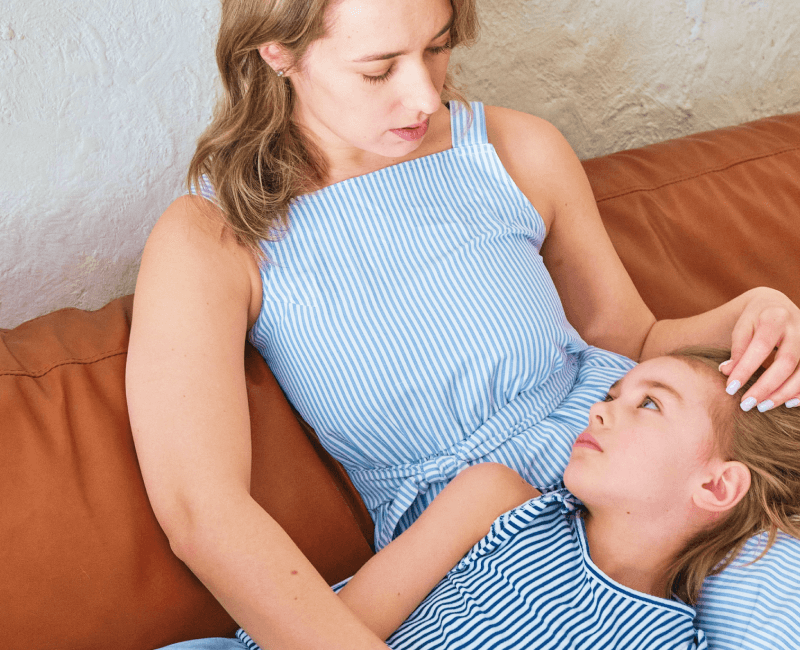Early Years Mental Health: Part 1 - Relationships Rule!
This two-part blog is a guide for any early years’ practitioner looking for guidance on how to support young children’s emotional development and mental health. This week, we’ll have a look at how to integrate nurturing interactions into your practice, and some of the neuroscience that explains how these kinds of interactions can have such a beneficial impact on a child’s emotional growth.
Relationships help brains grow!
From the age of 0-3, a child’s brain is growing at an exponential rate, and essential to this growth are responsive, nurturing relationships. Sensitive interactions are what helps a baby’s brain develop as many as a million neural connections every second. When a baby is rocked and soothed, it’s actually helping their brain to grow!
This rapid brain development continues throughout a child’s early years, and it’s warm, responsive relationships that help them to nurture secure attachments and a sense of self. This in turn allows a child to explore, discover and be creative. A good starting point is to think of your setting as an environment of relationships for the children in your care.
Creating an environment of relationships

So, what does this nurturing environment of relationships look like? Here are some key pointers to keep in mind:
1. Quality playtime
Consider playtime not only as a chance to build towers or play with a doll’s house, but as time spent together with someone. The key ingredient of play isn’t having the most stimulating toys, but the interactions between you and the child during play. The building blocks of quality play time include:
Serve and return interactions: The phrase ‘serve and return interaction’ was coined by Harvard University, and describes simple back-and-forth interactions between you and a child. When a child seeks an interaction with you, you offer a response. Take the following example between infant Amy and her dad, John:
Amy: (holds up a car) Ah, ah!
John: (smiles) What have you got there?
Amy: (waves the car about and laughs)
John: It’s your special car!
Amy ‘serves’ up an interaction (holding up a toy car), and John ‘returns’ with a supportive comment, ‘What have you got there?’
Serve and return interactions are about more than just turn-taking. They involve noticing what a child is engaged in, and sharing their experience with them. They help a child make sense of their experiences, and to develop an understanding not only of what they’re thinking and feeling, but what you’re thinking and feeling, too.
Serves and returns don’t have to be spoken; they can also be gestures or facial expressions. A child and adult can enjoy a series of ‘serves’ and ‘returns’ without any spoken language at all.
A ‘wait and see’ approach: Another element of good quality playtime is to wait and see what a child will do with a particular game or activity, rather than directing how they should play. It may feel natural to take the lead and make suggestions, particularly with children who are quiet or hesitant to take the initiative. However, it’s worth sitting back and seeing what they come up with when given the space to explore. Some of the most valuable moments between you and a child are likely to be moments of shared silence in your interactions. These pauses give the child the time they need to consider, reflect and decide what to do or say next, and will help them develop a sense of agency.
2. Be curious

When we’re trying to understand how a child is feeling, or what has caused them to behave a particular way, it’s common to ask questions: ‘What’s the matter? Why did you do that? How are you feeling?’ For young children, however, these questions can be difficult to answer. Children don’t always know what they’re feeling, or how to describe it; they may also feel too worried or embarrassed to tell you.
If these questions are going nowhere, try to be curious and ask yourself: ‘I wonder what the matter is? I wonder why they did that? I wonder how they’re feeling?’
The answers to these questions will help you to have nurturing conversations. When you think you have an idea about how a child is feeling, you can make a tentative suggestion: “I wonder if you’re a bit cross.”
Adults will inevitably misread cues at times, which is why it’s more helpful to show curiosity rather than certainty about a child’s feelings, for example, ‘Perhaps you’re feeling blue’ or ‘I wonder if you’re cross’. However, missteps are an ordinary part of any relationship. It’s not about getting it right every time, but rather giving a child an experience of having someone show interest in how they feel.
3. Be playful with language
Emotional literacy is about helping children to understand the full spectrum of their own emotions and how to manage them. We often use words like ‘happy’ and ‘sad’ to help children understand what they’re feeling. However, sometimes the right word may not be something as fixed as ‘happy’ or ‘sad’. There are many shades of emotion that might feel raw and furious, but that aren’t quite adequately expressed by the word ‘anger’, for example.
With that in mind, be playful with children when it comes to finding words to talk about emotions. Some children might feel better understood by expressions like ‘feeling wobbly’ or ‘spikey’, or even words they make up themselves. The more deeply a child understands how they feel, the more likely they are to eventually develop ways of managing these feelings when they become overwhelming.
4. Accept how they feel
Healthy emotional development isn’t as much about fostering happy and positive traits in children (how we might like them to be!) as it is about helping them to manage and understand how they really feel.
Research has shown that children who receive empathic responses are more likely to develop empathy themselves. This is why it’s more helpful to acknowledge negative feelings, rather than discouraging children from having those emotions in the first place. This can be a difficult task at times, particularly when children express very strong negative emotions.
However, when children sense their emotions are frightening or unacceptable to people, they are more likely to develop a sense of shame, and avoid telling people how they honestly feel. This may limit their opportunities to build a capacity to self-reflect and regulate their emotions. When you are confronted by strong, negative emotions in children, try to be curious about what they’re actually feeling.
If a child states that they ‘hate’ someone, for example, try to talk with them about what they really mean: perhaps they’re feeling jealous, worried or rejected. Encouraging them to talk about how they feel will help give more shape and meaning to what they’re experiencing.
You may recognise many of these features already in your work with children, which means you’re well on your way to offering them great support for their emotional development.
Next time, in part 2, we’ll have a look at how understanding attachment styles can help you support good mental health in your setting.
If you're interested in learning more, the Mable Academy has lots of accredited CPD videos available to your whole staff. To find out more, why not get in touch
- General mental health (32)
- Counselling (25)
- Anxiety (11)
- Generalised anxiety (10)
- Depression (7)
- Anger (4)
- Relationship Issues (4)
- Self-Harm (4)
- Suicidal Thoughts (4)
- Autism (3)
- Classroom Behaviour (3)
- Eating Disorders (3)
- Eating Issues (3)
- Loss (3)
- Phobias (3)
- Safeguarding (3)
- School Issues (3)
- LGBTQ+ (2)
- SEMH (2)
- SENCOs (2)
- Secondary & Sixth Form Schools (2)
- AAC (1)
- Absenteeism (1)
- Autism Support (1)
- Looked After/Adopted (1)
- OCD (1)
- Primary Schools (1)
- Social Communication (1)
- Trauma (1)
You may also like
These related stories

Supporting your child's mental health during half term

3 ways to start a conversation with your child about mental health

